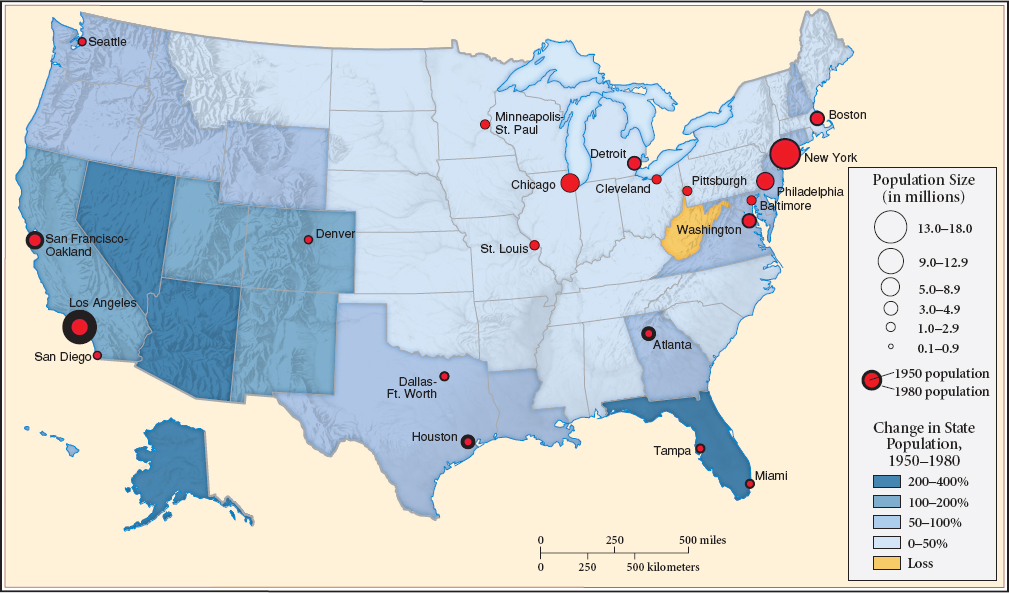Rise of the Sunbelt
Suburban living, although a nationwide phenomenon, was most at home in the Sunbelt (the southern and southwestern states), where taxes were low, the climate was mild, and open space allowed for sprawling subdivisions (Map 26.2). Florida added 3.5 million people, many of them retired, between 1940 and 1970. Texas profited from expanding petrochemical and defense industries. Most dramatic was California’s growth, spurred especially by the state’s booming defense-related aircraft and electronics industries. By 1970, California contained one-tenth of the nation’s population and surpassed New York as the most populous state. At the end of the century, California’s economy was among the top ten largest in the world — among nations.

A distinctive feature of Sunbelt suburbanization was its close relationship to the military-industrial complex. Building on World War II expansion, military bases proliferated in the South and Southwest in the postwar decades, especially in Florida, Texas, and California. In some instances, entire metropolitan regions — such as San Diego County, California, and the Houston area in Texas — expanded in tandem with nearby military outposts. Moreover, the aerospace, defense, and electronics industries were based largely in Sunbelt metropolitan regions. With government contracts fueling the economy and military bases providing thousands of jobs, Sunbelt politicians had every incentive to support vigorous defense spending by the federal government.
Sunbelt suburbanization was best exemplified by Orange County, California. Southwest of Los Angeles, Orange County was until the 1940s mostly just that — a land of oranges, groves of them. But during World War II, boosters attracted new bases and training facilities for the marines, navy, and air force (at the time the army air corps). Cold War militarization and the Korean War kept those bases humming, and Hughes Aircraft, Ford Aeronautics, and other defense-related manufacturers built new plants in the sunny, sprawling groves. So did subdivision developers, who built so many new homes that the population of the county jumped from 130,760 in 1940 to 703,925 in 1960. Casting his eye on all this development in the early 1950s, an entrepreneurial filmmaker and cartoonist named Walt Disney chose Anaheim in Orange County as the place for a massive new amusement park. Disneyland was to the new generation of suburbanites what Coney Island had been to an earlier generation of urbanites.